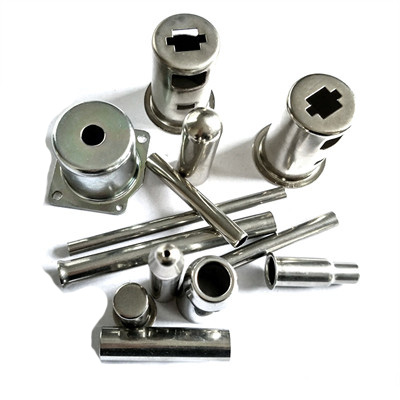
Deep Drawing
Deep Drawing is a metal forming process used to create three-dimensional shapes from flat metal sheets by drawing the material into a die. This technique is particularly useful for producing parts with deep cavities or complex geometries, such as cans, enclosures, and automotive components. Deep drawing is known for its ability to produce seamless, durable, and high-precision parts, making it a popular choice in various industries.
There are many kinds of deep drawing, and the location of the deformation zone, the nature of the deformation, the distribution of the deformation, and the stress state and distribution law of each part of the blank are essentially different due to the different geometric characteristics. Some common stretching methods include rectangular drawing, mound drawing, flanged hemispherical drawing, flange drawing, edge drawing, and deep drawing.
The choice of material is also crucial when manufacturing deep drawing parts. Commonly used materials include carbon steel, alloy steel, and stainless steel. Because of its good plasticity and toughness, carbon steel is often used in the drawing process of building structure, machinery manufacturing, automobile manufacturing and other fields; alloy steel has higher strength and hardness due to the addition of appropriate alloying elements, and is suitable for occasions with high requirements for material strength; stainless steel is especially suitable for humid and corrosive environments with its excellent corrosion resistance.

We have the capabilities to produce complex parts with draws up to 3” deep and 8” in diameter. Using CAD/CAM drawing system, we converts flat metal blanks into complex cylindrical, rectangular, square, or multi-faceted shells. With our in-house tooling, up to 220 ton oil hydraulic press, enables us to produce draws with material thickness of .005″ to .138″.

Applications of Deep Drawing
Electrical Appliances
In the electrical appliances industry, deep drawing is used to manufacture components such as motor housings, compressor shells, and enclosures for electronic devices. These parts require durability, precision, and seamless designs to ensure proper functionality and safety.
Motor Housings: Deep drawing produces robust and seamless housings for motors used in appliances like washing machines and refrigerators.
Compressor Shells: The process is ideal for creating airtight and durable shells for compressors in air conditioners and refrigerators.
Enclosures: Deep drawing is used to create protective enclosures for electronic components, ensuring safety and longevity.
LED Lighting
In the LED lighting industry, deep drawing is used to produce components such as reflectors, housings, and heat sinks. These parts require precise shapes and finishes to optimize light distribution, heat dissipation, and overall performance.
Reflectors: Deep drawing creates smooth and accurate reflectors that enhance light distribution in LED fixtures.
Housings: The process is used to produce durable and aesthetically pleasing housings for LED lights.
Heat Sinks: Deep drawing can create intricate heat sink designs that improve thermal management in LED lighting systems.
Packaging
In the packaging industry, deep drawing is used to manufacture metal containers, cans, and lids. The process is ideal for producing airtight and durable packaging solutions for food, beverages, and industrial products.
Metal Cans and Containers: Deep drawing is commonly used to create seamless and durable cans for food and beverage packaging.
Lids and Closures: The process ensures airtight seals and easy-open features for packaging solutions.
Decorative Elements: Deep drawing can produce intricate designs for branding and aesthetic purposes.
Construction
In the construction industry, deep drawing is used to produce structural components, cladding, and architectural elements. The process is ideal for creating durable and precise parts that meet the demanding requirements of construction projects.
Structural Components: Deep drawing is used to create beams, brackets, and supports with high precision.
Cladding and Panels: The process ensures accurate and durable cladding for buildings and structures.
Architectural Elements: Deep drawing can produce decorative metalwork for facades, railings, and interior designs.

Deep Drawing is a versatile and efficient manufacturing process that plays a vital role in industries such as electrical appliances, LED lighting, packaging, and construction. Its ability to produce seamless, durable, and high-precision parts makes it an ideal choice for a wide range of applications. As a manufacturer, leveraging deep drawing technology can help you meet the diverse needs of your clients while maintaining high standards of quality and efficiency.